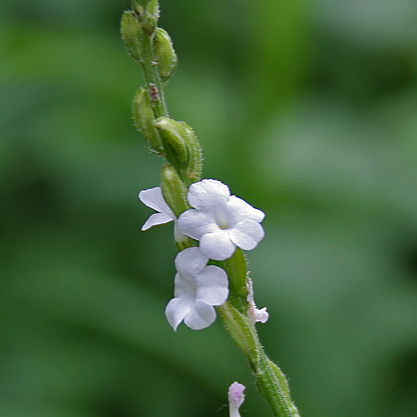Erect or ascending mostly almost subscabrid pubescent perennial herbs. Leaves opposite or subopposite, simple, mostly ± toothed, sessile or petiolate. Inflorescences raceme-like or subspicate, terminal or axillary; bracts small; flowers ± small, arranged in a spirally alternate or pseudo-secund manner on the mostly elongate rhachis. Calyx tubular, 5-ribbed, with 4–5 mostly short equal or subequal teeth, persistent, enlarging and covering the fruit, usually contracted and ± beaked at the mouth. Corolla white or coloured, ± irregular, funnel-shaped or hypocrateriform; tube cylindric, straight or slightly curved, widened at the throat; limb ± 2-lipped, with 5 unequal lobes. Stamens 4, didynamous, inserted near the middle of the tube, included; a minute staminode is sometimes present also. Ovary 2(–4)-locular, with each locule 1–2-ovuled; style terminal, filiform, 2-lobed at apex with a longer curved or erect stigmatiferous lobe and a very minute tooth-like lobe; ovules basal, erect, anatropous. Fruit eventually splitting into 2 1–2-locular subglobose cocci; pericarp hard, the dorsal surface echinate, scrobiculate or ridged, the inner excavated, flat or concave. Seeds without endosperm.
Fruit a schizocarp included within a persistent inflated calyx, separating at maturity into 2 bilocular mericarps (or mericarps 1-locular by abortion); mericarps with a dry and hard pericarp, linear or oblong, flat concave or deeply excavate on the commissural face, raised-reticulate or ribbed on the lateral faces, echinate or ridged on the dorsal face rarely smooth, glabrous, puberulous or shortly pubescent.
Ovary 2-carpellate, each carpel 2-locular, each locule 1-ovulate; ovules anatropous, erect, attached laterally at or near the base; style terminal, filiform, subequalling the lower stamens, 2-lobed at the apex with a short, stigmatic anterior lobe and an acute horny sterile posterior tooth.
Calyx tubular, 5-ribbed and slightly 5-plicate at anthesis, shortly and subequally 5-dentate or subtruncate and 5-denticulate at the apex, membranous, usually covered with hooked hairs intermixed with setae, becoming inflated about the fruit and ± narrowed and beaked at the mouth.
Corolla hypocrateriform or funnel-shaped, usually white or sometimes blue, rose, red or purple; tube longer than the calyx, cylindric, straight or slightly curved, widened at the throat; limb oblique, c. 2-lipped, with the abaxial lip 3-lobed and the adaxial lip 2-lobed.
Leaves opposite or subopposite, usually decussate, simple, petiolate or sessile, crenate-serrate or serrate, sometimes laciniate or lobed at the base.
Flowers small, shortly pedicellate, spirally alternate or pseudo-secund on the mostly elongate rhachis, each solitary in the axil of a narrow bract.
Stamens 4, included; filaments inserted about or above the middle of the corolla tube; anthers ovate or oblong, dorsifixed.
Inflorescences usually of terminal or axillary spike-like racemes; bracts small.
Perennial herbs with woody rootstocks, rarely with tuberous roots.
Seeds without endosperm; cotyledons oblong, somewhat thick.
Stem and branches 4-angled.

